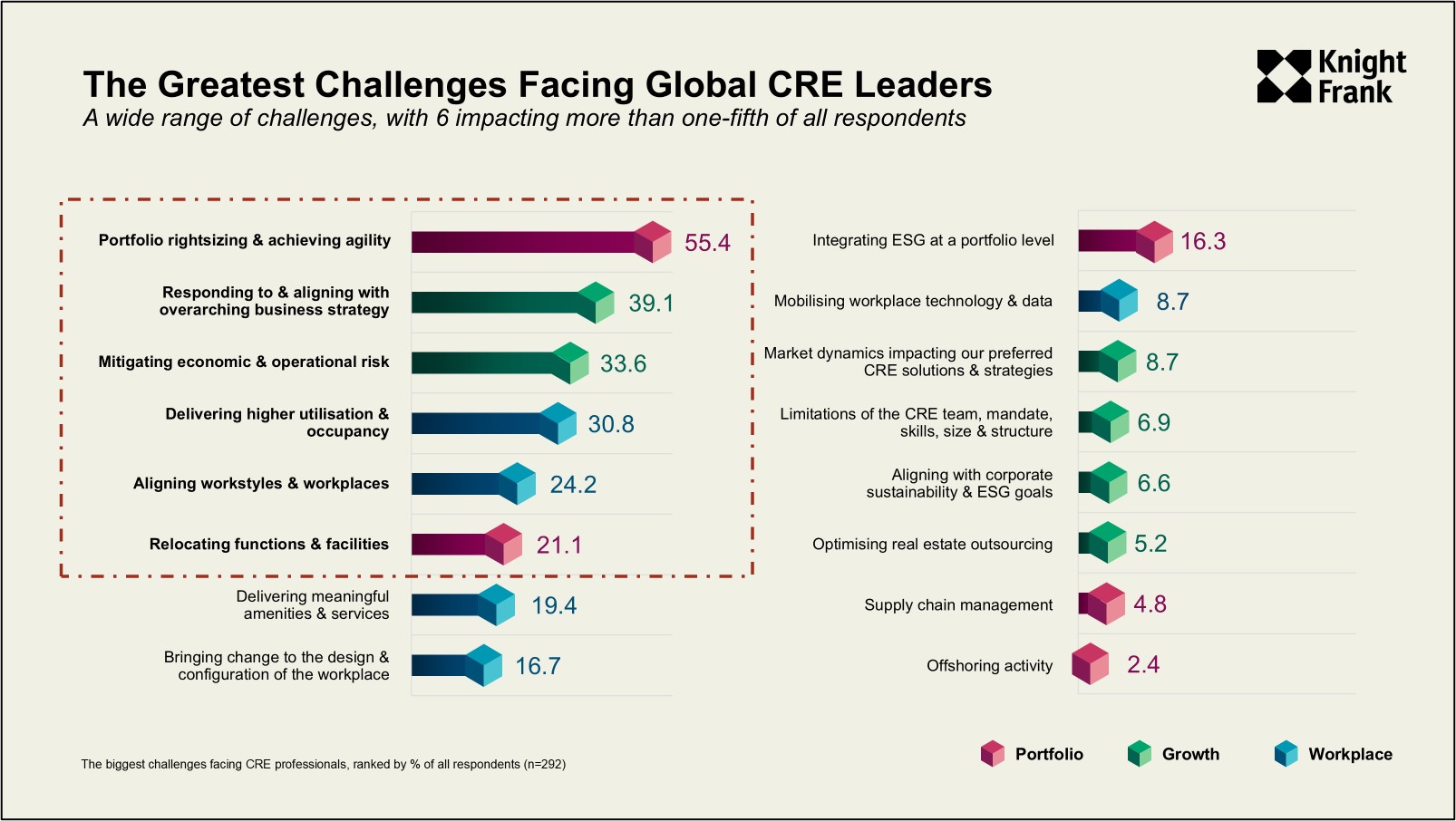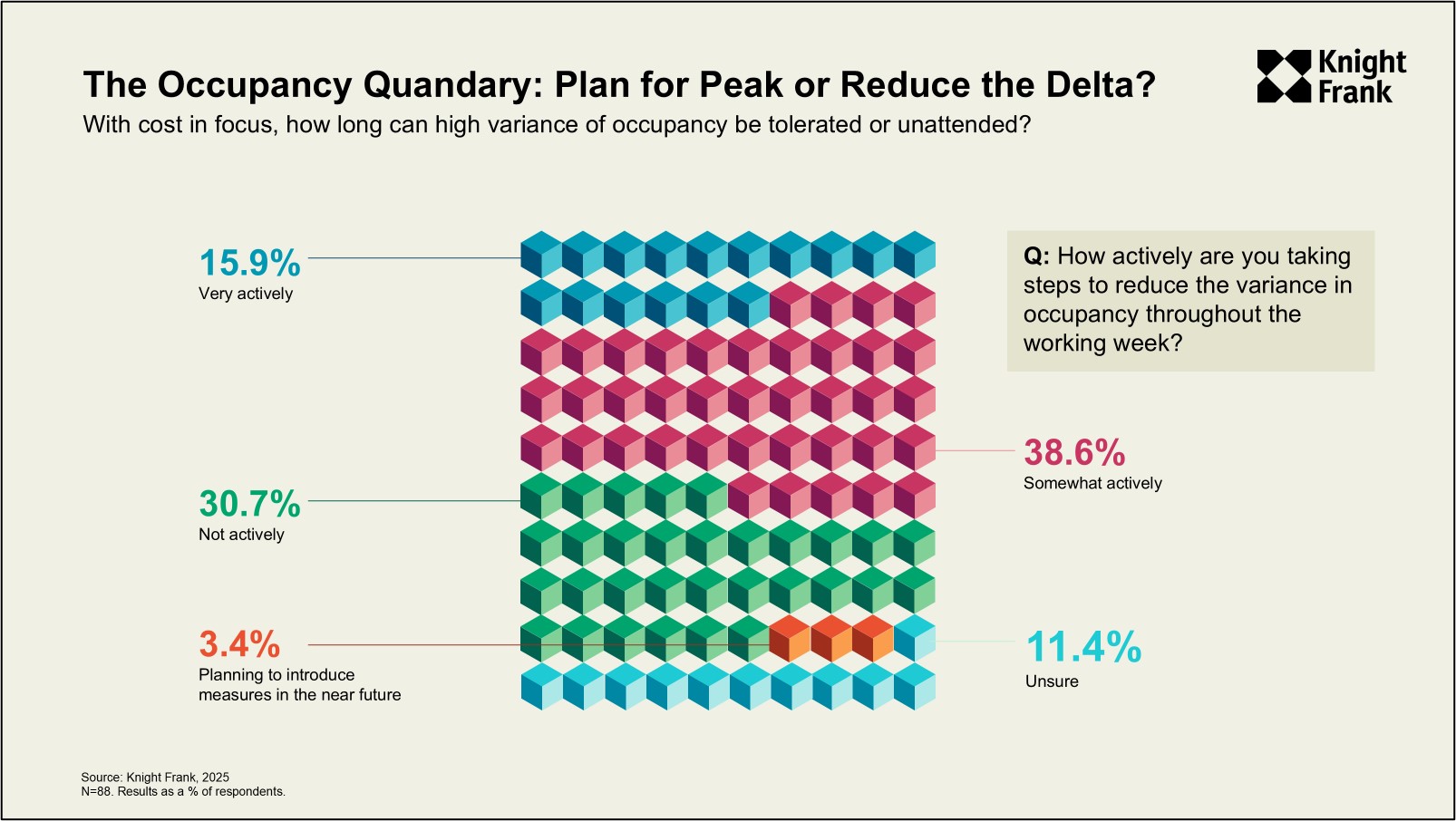Hard Truths, Smart Moves
Six steps to increase the relevance & impact of the CRE function
5 minutes to read
At the recent CoreNet Global Summit in Amsterdam, I had the privilege of convening and chairing a panel session titled Hard Truths, Smart Moves. The aim was simple but ambitious: to cut through the noise and surface the toughest realities facing corporate real estate leaders today – and, crucially, to identify the moves that will ensure the function retains (if not gains) influence, credibility, and impact in the years ahead.
I was joined by three outstanding panellists: Shelley Frost, Global Head of Real Estate Strategy at DSM-Firmenich; Toby Chapman, Global Workplace Strategy Director at Arcadis; and Philip Cohen, Category Manager for Real Estate Facilities in Europe at Securitas Group. Together we brought nearly a century of experience across industries, geographies, and portfolios to the session. The perspectives offered sharpened an agenda that covered much ground: from navigating volatility to managing relocations, from workplace performance to the role of data in CRE decision-making.
The conversation was frank and lively, but also hopeful. Drawing on insights from the 4th edition of (Y)OUR SPACE and our panellists real-world experience, we surfaced six hard truths that can no longer be ignored, and six smart moves that point the way forward.

1. CRE Must move Upstream into Strategy
Hard Truth:
Real estate has long been recognised as more than “a box to put people in.” It shapes culture, attracts talent, and underpins resilience. Yet most CRE functions still sit downstream of strategy. In (Y)OUR SPACE, only 23.8% of leaders said their strategy is fully aligned with business goals, while three-quarters remain in a responsive role.
Smart Move:
Break the cycle by becoming a strategic business partner. That means fact-based conversations in the language of the enterprise - showing how portfolios accelerate new market entry, support talent strategies, and deliver on net-zero commitments. The opportunity lies not in claiming a seat at the table but in proving, with evidence, why CRE is already a driver of business ambition and critical to future strategic success.
2. Volatility Demands Action, Not Inertia
Hard Truth:
Volatility is no longer episodic - it is the new operating climate. Almost half of CRE leaders say it has pushed them toward conservative cost-control, even as nearly 70% of enterprises pursue bold transformation strategies like market entry, digital transformation, and business acquisitions. Volatility demands transformation, yet the instinctive response is caution.
Smart Move:
Resist the pull of conservatism. Build flexibility as standard, diversify geographically to hedge risk, and reframe cost discipline as fuel for growth. The winners will be those whose CRE leaders act bravely – providing their organisations with the capacity to change when others hesitate.
3. Rightsizing is Alignment, Not Just Cuts
Hard Truth:
Rightsizing is too often seen as shorthand for cuts. In reality, (Y)OUR SPACE shows that more than three-quarters of CRE leaders view it as critical for aligning portfolios with strategy. Cost pressures matter, but so do business transformation and new workstyles.
Smart Move:
Treat rightsizing as recalibration, not retreat. Link changes explicitly to strategy, tailor them to chosen workstyles, and balance efficiency with agility and performance. Done well, rightsizing is a platform for sharper, more relevant portfolios - not necessarily smaller ones.
4. Relocation Rising – Purpose is Critical
Hard Truth:
Relocations are rising: 40% of leaders expect activity in the next cycle, including headquarters and core hubs. But costs, complexity, and employee resistance remain formidable barriers. Without a clear rationale, relocations risk becoming destabilising distractions.
Smart Move:
Make purpose explicit. Whether driven by talent, market entry, or sustainability, relocations must be strategic acts, not reactive moves. Success rests on extensive due diligence, rigorous preparation, clear communication, and framing relocation as a positive inflection point in the organisation’s story.
5. Workplace Must Perform, Not Just Exist
Hard Truth:
The office is no longer a given – it must earn its place. Nearly half of firms responding to (Y)OUR SPACE expect hybrid workstyles to dominate three years from now, while a further fifth lean towards office-first postures. Such workstyles create volatile occupancy patterns that, in turn, lead to operational and fiscal inefficiency. Only half of the organisations responding to our survey are actively tackling the problem right now, with more to come. To address the problem the choice is between ‘planning for the peak’ or ‘reducing the delta’ between peak and trough occupancy rates. Delivering strong efficiency will invariably demand curbing some flexibility by directing attendance.
Smart Move:
Redesign the workplace for performance. Smooth occupancy peaks through programming, align space to dedicated workstyles, and measure outcomes such as collaboration and engagement – not just headcounts. Employees will return to offices that deliver value, not those that simply exist.

6. Data Needs Action, Not Collection
Hard Truth:
For 15 years, there has been the promise that big data would transform the CRE function. Yet too often dashboards remain unused, while real estate comes under mounting scrutiny from a cost, culture and sustainability standpoint. Data without action fuels scepticism.
Smart Move:
Close the loop. Use data to drive transformation, not just measurement. Link insight to decisions, build a shared language with business leaders, and model scenarios for change. In a fact-based dialogue, numbers become the foundation of credibility, investment, and relevance.
The Hardest Truth of All
These six truths capture the urgency of the moment.
Yet an even harder truth underpins them: without capital approval, even the best strategies remain ideas on a page. CRE leaders must redouble their efforts to reframe real estate from a cost centre to a strategic investment that is essential to corporate transformation, ambition, and competitiveness.
This is a defining period for corporate real estate – but only if leaders win the battle for resources and deliver at pace. The occupier window will not remain open indefinitely; when markets turn, opportunity will narrow. And that is where execution comes in. As Elon Musk has said, “Ideas are easy. Execution is everything.”
As part of the ongoing (Y)OUR SPACE campaign, we will be publishing a fuller paper unpacking each of these six hard truths and smart moves in greater detail – drawing further on survey evidence and practical guidance for CRE leaders navigating this defining period.
In the meantime, we would welcome your reflections.
Do these hard truths resonate with your own experience?
Are these smart moves the right ones, or do you see different levers at play?
Please do share your feedback so we can build a richer, fact-based dialogue on the future of corporate real estate.